Chris Baty's Blog, page 147
March 2, 2016
Get ready for Camp NaNoWriMo this April! “What’s that?” you...


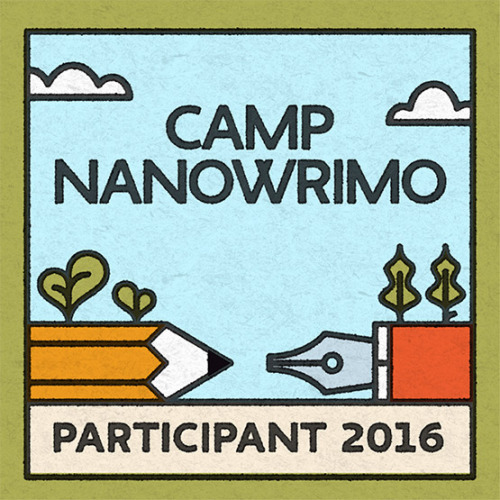
Get ready for Camp NaNoWriMo this April!
“What’s that?” you ask?
It’s a virtual writers’ retreat where you can nurture any writing project, novel or not, set your own word-count goal, and create a cabin cohort of fellow authors. Come check out Camp NaNoWriMo, and let your creativity grow!
February 29, 2016
How to Tell the Difference Between Constructive and Destructive Feedback

You wrote a novel! Now what? NaNoWriMo’s “Now What?” Months are here—this January and February, we’ll be helping you guide your novel through the revision and publishing process. Today, author M Todd Gallowglas , describes how to build constructive feedback relationships:
When you tell people you’ve just finished writing a novel, many of them, writers and non-writers alike, are going to be full of well-meaning suggestions and advice. Some of the advice will be good, some of it… not so much. One of the things you’ll hear most often is to have other people read your book and give you feedback.
Great idea!
Well, it’s a great idea until people start actually giving you feedback on your work. After that, you have to sift through all the stuff that works for you and what doesn’t, what’s going to help your book and what’s going to hurt it. Yes, you read that right, feedback comes in two types: constructive and destructive. Destructive feedback, while often well-intended, can not only hurt your book, but also hurt you as a writer. I have some tricks on how you can tell the difference between constructive and destructive feedback.
The first way to tell what kind of feedback they are going to offer you is by listening to the first things they mention when they talk to you about your book. If someone begins with the stuff they liked, and what really worked about your book, that’s a good indication that they are going to be constructive, because even if they have to give you some bad news, they’re aware enough to know that it’s always easier to take the bad after the good. Someone giving destructive feedback will often launch immediately into their perceived problems with the book.
From there, the differences continue on the same themes.
Someone offering destructive feedback wants to help you “fix” what they think is “wrong” with your book, while someone giving you constructive feedback will ask what you were trying to do with specific scenes and characters.
Constructive feedback will compare and contrast your writing’s effectiveness with other scenes in your work, while people who deliver destructive feedback will compare and contrast your book with their favorite books, usually mega-bestsellers or classics.
Now, this constructive/destructive isn’t a yes/no, all-or-nothing game. It’s a spectrum. Your early readers are going to fall somewhere in between the two extremes. When people talk to you about your book, gravitate mostly to those people who deliver feedback that you feel is constructive.
Your book is going to have problems. All books do. Destructive feedback is going to identify what they feel are the problems and prescribe their “fix”. Constructive feedback will ask you questions about your intentions—for example, “Did you intend to have these two characters start this subplot in this scene that doesn’t seem to go anywhere?”—and will also leave any suggested “fixes” open-ended, asking questions that get you thinking. (In this case, you might either rework the character interaction so as not to begin a false subplot, strengthen the later bits of that subplot so that readers can identify them more, or develop the subplot that you didn’t realize you were starting.)
I’ve collected a small group of a half-dozen people, who beta read for me. Over the last ten years or so, I’ve communicated what works for me, and what kind of feedback is most valuable, and in return, they now give me almost 100% constructive feedback. It’s made all the difference in my writing career. It can make the difference in yours.

M Todd Gallowglas is a professional storyteller (like on a stage with a show in front of real people) and the author of the Tears of Rage, Halloween Jack, and Dead Weight series.
Top photo by Flickr user Rhino Neal.
February 26, 2016
Now What? How to Find an Audience for Your Book
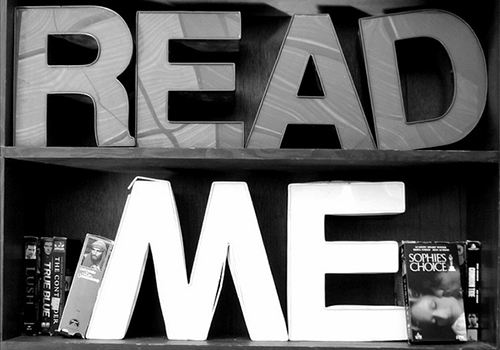
As part of our “Now What?” Months, we’re shifting our focus to publishing in all its myriad forms. Today, Orna Ross of the Alliance of Independent Authors closes out a series on independent publishing, focusing on how to market and promote your book :
This the final post in a series of four that leads authors through the design and formatting phases of the writing and self-publishing journey. You’ve completed your first draft in 30 days, completed the self-editing and editorial stage, the design and formatting stage, and the production and distribution stage. Now what? It’s time to market and promote your book.
Begin With Your Motive in Writing your Book.
The key to good organic book marketing is to connect with readers around your deepest motives for writing the book in the first place. Creative motives for writing a book fall into three categories. We write either to:
educateinspire
entertain
The best books probably do all three, but one will always be uppermost in the author’s heart.
Writing As ServiceEach of these creative intentions has service at its heart. This is what I call the ‘point of service’, and it is there that you go to reach your readers. What do you want them to feel as they read your books? Can you set up a social media strategy that replicates and augments this emotional response to your work?
Aim to create short bite-sized pieces—blog posts, Twitter or Facebook updates, pictures on Pinterest or Instagram—that connect with readers in the way your books do.
Listening to Your Potential ReadersGo where most of your readers are most likely to be found. Pay attention to what matters to them. Take your time with this phase, as long as is necessary for you to understand them.
Learn from them. How might you be able to help? Inspire? Entertain? Amuse? Inform? As you listen, think of your book, of its deepest messages, of its raison d’etre. When the time feels right, initiate a conversation. Not with the intention of flogging your wares, but with the intention of serving these readers in the same way that your book serves them.
If you are authentic in engaging the “point of service”, you will organically develop that indie author desirable: a strong author platform. But you will also, more importantly, come to value that work for itself and value that direct connection to your readers.
Important Note: Social media provides authors with a strategy to increase the odds in our favor. Unwillingness to do it is often just plain old creative resistance. However, if you’ve honestly tried (not just been lazy or resistant) for a time and genuinely found that it interferes with your creative process, you will need to find another way. What feeds your writing must always come first.
Email MarketingYou use the platform you build through social media not to sell books directly but to attract readers to your website so you can build the number one, most important, never to be neglected strand in author marketing—drum roll, please—the email list.
To build your list, you need a blog and/or a website. There, you offer your readers something of value for free in exchange for their email address. This is permission marketing. You have given something to the person and in exchange asked permission to send them more useful information.
Note: List building is not list-buying. It’s the growth of your own list over time, in exchange for something of value.
If you have engaged the “point of service”, people will already know, like and trust you. If you have provided them with education, entertainment or inspiration and then you write and tell them, “Hey, I published a book. I think you’ll like it. Here’s where you can buy it”, a lot of them will.
Even better, many of them will go and review the book, and spread the word for you.
Paid Marketing For AuthorsFacebook Ads: Facebook ads are the current hot favorite in paid marketing and they work well when you have a clear strategy. The best use of Facebook Ads, for most authors, is to use them to build your mailing list rather than to sell your books. Mark Dawson, one of the experts on Facebook ads for authors, says he would rather have a sign-up than a sale any day. This is because nothing is more valuable to an author than—another drum roll, please—your email list.
Goodreads Giveaways: Authors who are members of Goodreads can choose to host giveaways. Goodreads only offers print books and authors sometimes make the mistake of feeling they have to offer a large number of books. A one-book giveaway can attract as much attention as a ten-book giveaway.
Cover Ads on Review Blogs: Choose high-traffic review blogs to feature your ads. Keep track of your preferred Review Blogs and Advance Readers, and take note of those you’d like to advertise with. Test your return on investment.
Bookbub: BookBub is one of the more well-known advertisers for indie authors. Their success is based on their email list, to whom they send discounted books. Bookbub may be one of the more expensive options but it tends to have the highest return on investment, which is more important.
Using Twitter for Book Promotion: Popular genres do well on Twitter when the book is well presented, has great reviews, an eye-catching cover, and is sold at a competitive price.
Set your Creative and Commercial IntentionsNo matter what marketing or promotional activity you engage in, start by identifying your aims. Not just to “sell books” or “sell more books” but how many books, to whom and how.
You’re an indie author. Your time is limited. So make the Pareto Principle work in your favor. You cannot do everything and it won’t be perfect. Good enough is what you’re after.
Like all aspects of publishing, remain open to learning by doing, experimenting and exploring, doing more of what works and less of what doesn’t, until you have found your own individual best path to your readers.
ALLi (The Alliance of Independent Authors) has a list of tools and services that makes indepedent publishing manageable. Members also have access to a closed forum, where they can ask questions of other authors who have published this way before them—and access to the “Ask ALLi” program, which promises to answer any self-publishing question.

Orna Ross writes and publishes poetry and fiction as well as creative guides, and is greatly excited by the democratising and empowering potential of author-publishing. Her work for ALLi has seen her named as one of The Bookseller’s “100 Most Influential People in Publishing” since 2013. ALLi (The Alliance of Independent Authors) is a non-profit professional association for authors who self-publish. Our motto is “Working together to help each other”.
Top photo by Flickr user unsure shot.
February 24, 2016
How to Build a Welcoming Author Site
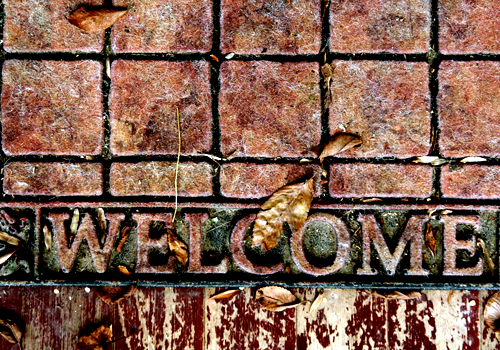
You wrote a novel! Now what? NaNoWriMo’s “Now What?” Months are here—this January and February, we’ll be helping you guide your novel through the revision and publishing process. Today, Sophie Walker, freelance editor , shares five things you should keep in mind when building an author platform:
You’ve written your 50,000 words and maybe you’re wondering now what? Where should I go from here?
If you’re looking to put your hard work onto the market then having an author website is essential. It helps you connect to your readers and for your readers to connect to you.
So… what should an author’s website include?An ‘About You’ page
Let your readers learn about you; be personable but don’t make it into a CV. Include interesting information, mention any quirky jobs or hobbies. Having a photo also goes a long way to building a connection with your readers.
A page with your work
It sounds obvious, but what form should this take? It’s always important to have your book cover on display and links to where you can buy your work. Include the blurb and perhaps the first chapter.
A news page
Updates are a good way to fill your website. Are you doing book signings or blog tours? Perhaps you had a rave review you’d like to share.
A blog
This helps you connect to your readers. Good content on your blog helps to bring in readers and acts as free marketing, especially if it goes viral.
Imagine you written My First Novel and you’ve called your website and all your social media accounts MyFirstNovel. In the long term by focusing on one book, you may damage the prospects of selling further books. Think author awareness not book awareness.
2. Find a tone that is appropriate to the genres you work in.
For instance, if you write humor don’t write your website in a formal tone. Your website is an extension of you so make sure it reflects you.
3. Start early and don’t be afraid to change things up.
Do plenty of research online for advice and inspiration. Don’t be afraid to experiment with your website either.
4. Keep things positive.
Remember that your website is online and public; always keep things positive. Be polite to everyone. Don’t plagiarize nor confront people over bad reviews. You will be named and shamed and it can go viral in a negative way.
5. Make it something you would enjoy.
You yourself are a reader. If you saw an author site that was full of spelling errors and was hard to read, would you want to publish that author’s work?

Sophie Walker is a freelance editor and proofreader at WalkerEditorial. She is currently studying for an English postgraduate degree part-time. She also blogs about books at AShropshireGirl. You can follow her on twitter @WalkerEditorial and at @AShropshireGirl.
Top photo by Flickr user Sidereal.
February 22, 2016
I Published My NaNo-Novel! On Breaking Into Picture Books and Children’s Lit
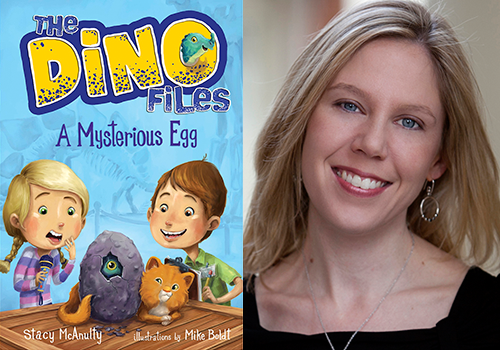
You wrote a novel! Now what?
NaNoWriMo’s “Now What?” Months
are here—this January and February, we’ll be helping you guide your novel through the revision and publishing process. Today,
the Book Doctors interview Stacy McAnulty, author of
The Dino Files
and past winner of the NaNoWriMo Pitchapalooza
, about her publishing journey:
We at The Book Doctors love NaNoWriMo. Every year we do an online Pitchapalooza with NaNoWriMo, and we get some fantastic pitches (We’re doing another Annual Online NaNoWriMo Pitchapalooza now!). One of our winners, Stacey McAnulty, had such a great pitch and wrote such a wonderful book, that she got a book deal.
Her book is coming out now, so we wanted to check in with her to see what it was like to go from National Novel Writing Month to getting a book deal.
What were your favorite books as a kid, and why?
We’re starting with the question that always embarrasses me, because I didn’t read as a young kid. I can remember sitting in fourth grade with the book How to Eat Fried Worms open on my desk, and instead of reading the words, I literally counted them. I’d count all the words, then turn the page so the teacher would assume I was quietly reading.
Also, we didn’t have many books in the house. I remember enjoying Little Golden Books and the picture book, The Fourteen Bear Summer and Winter (which was held together with duct tape).
I didn’t fall in love with a book until high school, and that was Pillars of the Earth by Ken Follett. I never counted the words in that book. It’s about 1000 pages; the word count must be in the mid-six figures. That novel blew me away and was also held together with tape.
What made you want to do something as ridiculous as write a book?
It is ridiculous! It’s a crazy challenge similar to climbing Mount Everest or swimming the English Channel. But I guess what appeals to me about writing a book (over climbing or swimming) is you can do it in your PJs. And while eating gummy worms. And you likely aren’t going to fall to your death or be eaten by a shark. Not much physical danger involved in writing a book. Though today my right shoulder is a little tight.
I have to write. It’s almost a sickness. Plots, crazy ideas, and conversations with imaginary characters are constantly running through my head. The only way to get these persistent thoughts out of my head is to write them down (or type them up). Maybe it is a sickness?! Multiple Mass Ideas Sickness. Obsessive Writing Disorder.
Where did you get the idea for The Dino Files?
My son asked for a “real-life dinosaur” for his fifth birthday. Obviously, he was about 65 million years too late. I started writing the first draft for him. I’d write a chapter during karate class and read it to him immediately after. It was great motivation having someone eager to hear the next segment of the story.
What were some of the joys and difficulties of writing in the voice of a kid?
I’ve been told I’m immature (not sure if it was meant as a compliment, but I’ll take it). I like to joke around, and I love to learn. Isn’t that the makings of a kid? Children get to be crazy. They can blow a giant bubble with gum and truly believe this is a reasonable transportation method for traveling to the moon. Their world has many rules. Don’t touch that. Don’t go there. Quiet down. Be still. But their imaginary worlds are still full of endless possibilities. Gravity? We don’t need no stinkin’ gravity. Writing for kids, lets me be a kid.
As for difficulties? There are some limits to the language and sentence structure. Fortunately, I have a limited vocabulary. You don’t want to discourage a reader, but you also don’t want to talk down to a kid. They’ll pick up on that quick.
The biggest challenge in The Dino Files series is the word count. My editor wanted between ten and eleven thousand words. We needed to leave room for Mike Boldt’s pictures and teaser chapters for the next book. That meant reducing the first manuscript by twenty-five percent. Cutting can be harder than adding words. At least for me. I had to slash jokes, description, and even characters. I learned to stay true to the story and focus on the action.
Did you have kids read the book as you were developing it?
In general, I only share my work with the kids I cook dinner for—which is a small group of three. As I mentioned, I read the first draft to my son as I was writing it. Unfortunately, young kids don’t appreciate revision. When I created the next draft, I asked my son if he wanted to hear it. The answer was no.
Luckily, I have two other kids. My eldest is a teenager. You want honest feedback? Ask a teen to critique your work. She read the next few drafts aloud to me. It’s great to hear your words interpreted in someone else’s brain and mouth. She also loved to point out my inconsistencies, and she would yawn dramatically at the boring parts (which have all now been cut!).
How did you go about getting your book deal?
I’d published a picture book in 2013 with a small press (un-agented). I knew that if I wanted a career, an agent was vital. I entered contests and went to conferences. But, in the end, I was pulled from the dreaded slush pile. I queried my now-agent with a picture book. I was sending out about a dozen queries a month. Lori Kilkelly offered representation based on that book, but I asked her to read The Dino Files before I accepted her offer. I wanted to know if she liked my longer works as well. Lori did see potential in The Dino Files. Potential is code word for needs another revision.
About seven months later, we went out with The Dino Files. Random House Kids replied a few weeks later: What a great read! Does the author have ideas for future books in the series? Those are the moments writers live for.
What are you doing to promote and market your book?
Marketing a book for kids is tricky. You want to connect with the reader, which, for The Dino Files, are kids aged seven to ten. But this demographic doesn’t have Twitter or Facebook accounts, not to mention credit cards for online buying or the ability to drive the minivan to the bookstore. So I need to connect through the adults in their lives first.
I offer free Skype visits for classrooms. I’ve created a website with print-outs and videos that parents and teachers can share with their kids. I’ve sent postcards to libraries and bookstores. I know there are dino-loving kids out there. I want to meet them. I want them to tell me I say Deinonychus wrong. I want them to tell me what kind of dinosaur would make the best pet. I want to inspire future paleontologists (and future writers!).
It’s so exciting to get a three book deal. Are you already working on the next book?
All the books are done and hitting shelves this year! The Dino Files series is intended for kids in elementary school. We hope they fall in love with the first book. And if they do, we can’t expect them to wait a year for the next book. Kids are binge readers. They want more. We are ready to give them more.
I’m currently working on a middle-grade novel about a twelve-year-old math savant. She has been homeschooled and is technically ready for college, but her grandmother insists she give public middle school a try first. And I’m always working on picture books.
How did National Novel Writing Month help you write your book and get it published?
Full disclosure, the first draft of The Dino Files was not an official NaNoWriMo win. The word count was only twenty thousand. (And the printed version is under eleven thousand.) But I have completed the fifty-thousand-word NaNoWriMo marathon three times.
NaNoWriMo makes you accountable. Resolutions, promises written on sticky notes, self-imposed deadlines—none of these have the power and prestige of NaNoWriMo. NaNoWriMo could only be improved if, somehow, they could send an electric shock through your keyboard when you failed to meet a daily goal or if there was a multi-million-dollar cash prize at the end.
We hate to ask you this, what advice do you have for writers?
Yep, this is a tough question. Luckily, I have a definitive answer on what all writers must do. I’ll call it Stacy’s Top Commandments on Writing.
Never talk about your first draft. (This is actually one of Stephen King’s rules.) If you’re telling your spouse or your hairdresser or your hedgehog all about your next project, you’re wasting your breath. Unless your hedgehog can take dictation. These people likely don’t care. And when you actually sit down to write your story, it’ll feel like work. So when a coworker or a neighbor asks what you’re working on, just give them a title. But be vague. Maybe something like Sunset at Dawn.Carry a book everywhere. No, not your phone with a book app, not your Kindle, and definitely not a tablet. Writers read. If you’re carrying a book everywhere, you’re likely to read it. And it’s good karma to “advertise” another writer’s book.
Compare yourself to everyone. Let’s be serious. You’re going to do it anyway. I’m just giving you permission. That way, you won’t feel guilty. Compare yourself to bestselling authors. Compare yourself to the guy in your critique group that just got a 6-figure deal for a memoir about camping with his 3-legged dog. Compare yourself to Jennifer Lawrence. When you’re done comparing, move onto number 4.
Write every day. I hate this rule. It’s a cliché at this point like New Year’s resolutions and diets that start tomorrow. But… I do believe this strategy works for a first draft. You must add to your work in progress each day. Or you risk your pesky muse fleeing the scene.
Get professional help. Of course, you may need help for your physical and mental problems, but I’m talking about your plot problems. Your character problems. Your spelling problems. You need to invest in yourself. I draw this inspiration from Vin Diesel. (Aren’t we all inspired by Vin Diesel?) He told a story on a talk show about saving up forty-some thousand dollars. Instead of buying a car or something flashy, he invested that money in himself. He made a small film with a friend to showcase his talent. That little movie led to a role in Saving Private Ryan. So if you are debating between buying a car and taking a writing class, take the class. (Warning: And if you have forty-thousand dollars to pay an editor, I’m totally available.)
Celebrate good times! It’s easy to get excited when an agent offers representation or when a publisher makes a deal or when a review is accompanied by a star. We know those are the rare, exciting moments in a writer’s life. But we must also celebrate the other big moments. When you type ‘the end’ on a manuscript, you deserve a dinner out. When you come up with that ultimate plot twist after you’ve been brainstorming (and crying about it) for a week, you deserve a glass of your favorite beverage. When you recover your work in progress from a fried hard drive, you deserve a glazed donut with sprinkles. (Guess how I spent my morning?) Take the time to celebrate your victories.
You need writer friends. Of all my rules, this is a must. I would not be a published author without the support of my writerly friends. Your family won’t understand your problems and frustrations. Unless you are a family of writers. Your non-author friends won’t understand plot arcs and rejection letters. Your neighbors don’t understand these acronyms: WIP, YA, ARC. Writer friends can empathize like no others. They will listen for hours about rejection letters while your mom will give you two minutes (tops!) and then she’ll suggest you try something new like painting because you always liked to color when you were a child. Just today, a writer friend convinced me not to quit a project I’ve already sunk a year of my life into. Writer friends have given me advice on everything from how do you organize an author visit, to how long should I wait before following up with an editor, to does this author photo make me look fun or crazy? Writers, while not exactly a rare breed (9 out of 10 retirees are working on a memoir, and the other 1 has a picture book called The Adventures of insert-some-animal that her grandson just loves), we work best in a nurturing, warm community. Just like bacteria.
Stacy McAnulty writes for children and teens. Her chapter book series, The Dino Files, hit shelves in January 2016. Her picture book, Dear Santasaurus, is also available now. She has eight picture books releasing in 2016 and 2017 including Excellent Ed and Beautiful. When not writing, Stacy spends her time thinking about writing, “researching” on the internet, reading, or eating. She has survived—um, won!—NaNoWriMo three times. She lives in North Carolina with her three kids, two dogs, one husband, and zero dinosaurs.
February 19, 2016
Now What? Producing and Distributing Your Book Independently
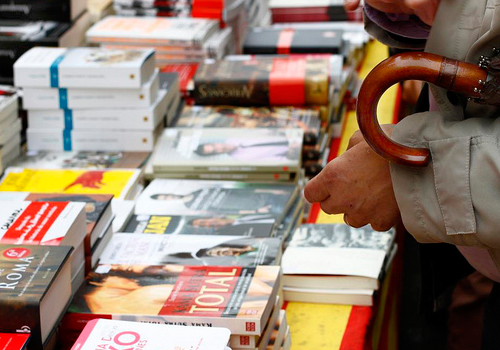
As part of our “Now What?” Months, we’re shifting our focus to publishing in all its myriad forms. Today, Orna Ross of the Alliance of Independent Authors continues a series on independent publishing, focusing today on production and distribution :
This the third in a series of four blog posts that will lead authors through the design and formatting phases of the writing and self-publishing journey. You’ve completed the self-editing and editorial phase, and the design and formatting stages. Now what?
Production and distribution refers to the process and logistics of actually getting your book to the consumer. There’s a myriad of services and platforms from Amazon to Ingram to iBooks that help you put your work in the hands of readers. Each one has pros and cons, depending on your needs.
Are you looking for accessibility, discoverability, user-friendliness, and international markets, or a smaller distribution to get sales rolling first?Are you willing to commit to being exclusive to one platform, and if so, for how long?
Are you looking to sell e-books only, or do you want to make physical books available too? If you do, do you want to push for shelf space in physical bookstores?
Will you want your book to be available in libraries? Will you sacrifice any royalties for that discoverability?
Too often, authors choose package services because they’re seduced by advertising, or they think it’s the only way to self-publish, or they are frightened by the techno-talk and don’t realize that when you get beyond the jargon of file names and formatting, it is no more complicated to upload and produce an e-book or POD manuscript than to produce a manuscript with Microsoft Word (some might even say less so).
You need also to be aware that there are sharks out there in the literary waters. ALLi’s Watchdog desk produces an annual guide to choosing a self-publishing service, which you should find useful.
Most Popular e-book and print-on-demand platformsKindle Direct Publishing (KDP)
is the virtual granddaddy of Amazon DIY platforms, established in 2007, for independent authors who
want to publish in e-book format. The service is free, until you sell a book, then a percentage is deducted from revenue
CreateSpace is Amazon’s free, online, print-on-demand platform for indie authors. This service lets you sell your paperback book directly on the CreateSpace eStore, through Amazon regional stores (Amazon.com; Amazon.co.uk, etc), as well as through your own website, live events, etc.
Apple iBooks is available for all iOS-capable products, so readers can easily take their library on the go and have it synced to other devices—laptop, phone, iPad—as they switch. The program features the intuitive, user-friendliness that Apple has become known for. It is a proprietary format: you must own a Mac to create a book on iBooks.
Kobo features an Open Platform, which allows readers to buy and read multiple digital formats on one e-reader, and they support 60+ languages in 190 countries.
NOOK is owned by Barnes & Noble and many of our members, especially US members, sell significant numbers of books there, but it is widely recognized that NOOK is struggling in this market.
IngramSpark is aimed at “publishers looking for print and distribution services,” and is unique in offering both e-book and physical books in the same platform. You can pick and choose, and use Ingram for e-book distribution only, or (more commonly) physical book alone, or some combination of the two. They allow you to opt-out of distribution and go direct on two platforms only, at the moment: Amazon and Apple.
Platform ExclusivityThe first rule of investment is to diversify. Monopolies are never good, and you don’t want to be dependent on any single income stream for your bread and butter. Indie authors rightly love Amazon, but once you have more than two books, it really does make sense to think about going wide.
ALLi’s advice is to have your books as widely available as possible, in as many formats as possible.
You can find lots of more detailed advice about production and distribution at ALLi’s Author Advice Centre: Production & Distribution page, where also compare services and point out the advantages of each.
In the next, and final, blog post in this series, we’ll be covering promotion and marketing for the self-published author.
ALLi (The Alliance of Independent Authors) has a list of tools and services that makes indepedent publishing manageable. Members also have access to a closed forum, where they can ask questions of other authors who have published this way before them—and access to the “Ask ALLi” program, which promises to answer any self-publishing question.

Orna Ross writes and publishes poetry and fiction as well as creative guides, and is greatly excited by the democratising and empowering potential of author-publishing. Her work for ALLi has seen her named as one of The Bookseller’s “100 Most Influential People in Publishing” since 2013. ALLi (The Alliance of Independent Authors) is a non-profit professional association for authors who self-publish. Our motto is “Working together to help each other”.
Top photo by Flickr user brandbook.de.
Top photo by Flickr user bernat…
February 17, 2016
The Top 4 Tips to Take Publishing by Storm
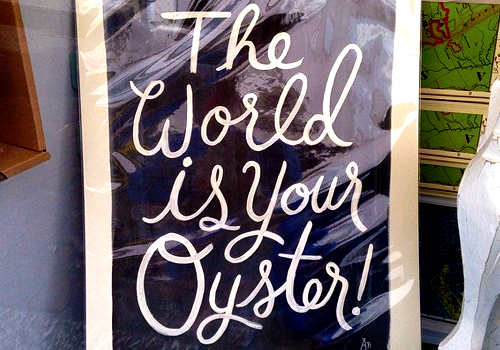
You wrote a novel! Now what? NaNoWriMo’s “Now What?” Months are here—this January and February, we’ll be helping you guide your novel through the revision and publishing process. Today, H. M. Ward, bestselling author of books including the Ferro Family series , shares why she chose independent publishing and found success:
The single most daunting aspect of publishing comes after you’ve completed your manuscript. There are two very different paths you can take, ultimately dictating how your publishing career will progress: find a traditional publisher, or go indie? When I started back in 2010, the very first thing I did, even before I finished my book, was research the market.
What’s selling right now?Is my book marketable?
What does that mean?
At the end of the day, whether you choose traditional or indie, the person responsible for selling your book is you. That can sound incredibly intimidating, so think of it this way: Whether you’re pitching to New York publishers or directly to the reader, it needs to be clear why they should buy your book. If you can’t answer that question, you’ll have problems no matter which path you take.
After months of researching, I signed with an esteemed NY agent and sent my debut novel out on submission. In the middle of the process, I realized traditional publishing wasn’t for me. I pulled my manuscript and self-published. Why? Because I had a much better understanding of the market, sales, and reader trends than the people I was speaking with in New York.
Tip #1: Be ConfidentYou need to have confidence in this business. For me, being confident means knowing what’s going on. It became crystal clear that I knew more about sales and selling intangible goods (ebooks) than NY publishers did.
But I keep checking back, knowing they’ll catch up at some point. I ended up in bed with Amazon Crossing because, duh-aam, they caught up! Others will, too. It’s a matter of becoming pertinent in today’s world or getting tossed aside as irrelevant.
Tip #2: Go Whole HogI spent six months tracking down every aspect of the publishing market, spending ten hours a day reading and researching. I did that because I was going into this whole hog. There was no putting my toe in the water. It was sink or swim.
There is no room for half-hearted commitment here. That’s the kiss of death. If you pull your punches and do things half-baked, people (readers, agents, publishers) will think you are subpar and that expectation carries over to your work.
In the traditional publishing path, most authors never make it past the query letter stage. If you can’t explain why an agent should want your book, odds are the agents won’t request a manuscript. Even if you then choose to publish independently, if an agent won’t pick up your book, it’s likely your readers won’t pick up your book either. I addressed this recently in a YouTube video series I’m doing for new writers trying to get their first book to market. This job isn’t easy. The publishing industry is an enormous, fluid puzzle. Pieces morph week to week, and it’s up to you to figure it out.
Tip #3: Embrace ChangePublishing breathes change day and night. One morning you might wake up to the news that the biggest bookstore in the US fell. If you think things like that don’t happen, guess again.
Companies change terms, new programs appear, royalty rates shift, and reader habits bend. It’s like flying by the seat of your pants 24/7. Some people find that exhilarating. Other people puke. Know which kind of person you are before you begin.
Tip #4: Failure Is Your FriendYou need to be willing to accept failure as a teacher. Failing to do something doesn’t mean it can’t be done—it simply means you haven’t figured out the puzzle yet. Jump in head first, learn from your mistakes, and keep going! Don’t look back.
Those who dare to defy expectation are the ones who enjoy continued success. They embrace failure, laugh in the face of change, and, when faced with a new challenge, they yell, “Bring it on!”

H.M. Ward continues to reign as a New York Times bestselling author who is swiftly approaching 10 million copies sold since 2011, placing her among the literary titans. Ward has been featured in articles in the New York Times, Forbes, and USA Today to name a few. You can interact with this bestselling author on Facebook.
Top photo by Flickr user gingerbeardman.
February 12, 2016
Now What? How to Self-Publish a Well-Designed Book
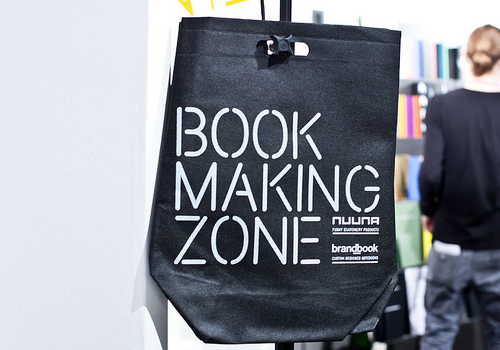
During the second month of our “Now What?” Months, we’re shifting our focus to publishing in all its myriad forms. Today, Orna Ross of the Alliance of Independent Authors continues a series on independent publishing, focusing today on design and formatting :
This the second in a series of four blog posts that will lead authors through the design and formatting phases of the writing and self-publishing journey. You’ve completed your first draft in 30 days, and completed the deepening, self-editing and editorial phases. Now what?
Once you have a fully edited manuscript, consider turning it into a digital book and publishing it.
Why digital? Digital levels the playing field for self-publishers. When readers search for, find, and buy books on the Internet, how the book was published becomes irrelevant. A self-published book has a page on Amazon or Kobo or iBooks that’s just as much a selling opportunity as the pages for books from the big trade publishers; if your book is well written, edited, and designed, the reader won’t know the difference.
As a self-publisher you decide what’s going to be in your book and how it will look. This not only includes the exterior and Interior design, but also encompasses document conversion to the multiple formats necessary to produce your digital book (in e-book and print-on-demand editions).
Cover DesignYour book’s cover is its first impression with readers. A cover that looks good, represents your story, and is of a professional quality will help your book appeal to your audience and stand up next to trade-published books in its category.
Design services can vary widely in price, and more expensive does not always mean better. It’s important to have done some research around what you want and what’s currently working well in your genre.
Do you want a specific look that brands all your books? Similar covers for particular series? Imagery that matches other covers in your genre? Or do you want to be more creative, and do something different?Make sure your cover does its job. A cover must be appealing and intriguing enough to make a reader want to stop what they’re doing, and look further. So it’s more important that it looks good in thumbnail size than in full print size.
Whether you choose to get a cover image from a design service or design your own cover, you should familiarize yourself with issues around copyrights and licensing for any images or fonts used.
Interior DesignProduction can be a daunting task for a first time self-publishing author. Once you get past the jargon, though, some simple tools and services can make it a much more manageable task.
Manuscript conversion is simply taking one form of your manuscript—be it in DOC/DOCX, RTF or PDF—and making it into another format that is ready to be uploaded as an e-book file or POD file on self-publishing platforms.
Scrivener is one handy tool for self-publishers because as well as being an excellent writing software, it also takes care of formatting with minimal effort or knowledge needed. Other indie authors use Vellum—or you can pay a formatter to do the job for you.
E-book and Print-on-Demand Book FormattingIf you plan on offering both e-book and print book versions, you have to produce the book in several different formats: mobi, epub, and pdf. Not only do you have to ensure the accuracy of these files, you have to also ensure that each file works on as many devices as you can test: Android phones and tablets, iPhones and iPads, computers, Kindles, NOOKs, Kobo readers, etc.
There are several programs available to help authors format and layout their books for a variety of purposes. Their prices can range widely, so it’s important to know what you need for your particular projects and goals.
If you write fiction, you’re not likely to need a program with functionality for designing pages with lots of graphics, so something like Scrivener can make a very adequate ebook.
For print, interior design becomes trickier. Joel Friedlander, the Book Designer, offers templates that can be used by self-publishers. And again, it’s always possible to outsource any of these jobs, if you can afford to and would rather spend your time on other writing or publishing tasks.
In the next blog post in this series, we’ll look at production and distribution, and how to get your book into the hands of readers.
ALLi (The Alliance of Independent Authors) has a list of tools and services that makes indepedent publishing manageable. Members also have access to a closed forum, where they can ask questions of other authors who have published this way before them—and access to the “Ask ALLi” program, which promises to answer any self-publishing question.

Orna Ross writes and publishes poetry and fiction as well as creative guides, and is greatly excited by the democratising and empowering potential of author-publishing. Her work for ALLi has seen her named as one of The Bookseller’s “100 Most Influential People in Publishing” since 2013. ALLi (The Alliance of Independent Authors) is a non-profit professional association for authors who self-publish. Our motto is “Working together to help each other”.
Top photo by Flickr user brandbook.de.
February 10, 2016
Now What? An Overview of the Publishing Landscape

As part of NaNoWriMo’s “Now What?” Months, Nook Press is sponsoring a free webinar with Brooke Warner, author and publisher, on Thursday, February 11, 2016, at 4 PM PST. As a lead-up, Brooke offers a quick snapshot of the publishing landscape you might be facing this year:
Modern aspiring authors hoping to land a traditional deal face the difficult reality. The barriers to traditional publishing are higher than they’ve ever been, and if you’ve ever shopped a manuscript, you’ve no doubt experienced the excruciating pace of traditional publishing.
On the nontraditional side, the publishing world is virtually exploding. There are authors taking advantage of what’s happening in this space, and authors holding back. It’s hard to let go of the dream of having a New York agent or editor validate your work. And yet, in the past ten years or so, the majority of traditional deals are going to those writers who come to the table with a preexisting platform, meaning they’re already kind of famous.
There’s only one key to publishing success, and that’s getting published. What follows is a quick 411 on the current publishing landscape for aspiring authors, so you can wrap your mind around what’s what and formulate a good plan.
Traditional publishingI still recommend that first-time authors try for a traditional deal. But I also encourage authors to advocate for themselves. Traditional publishers are used to calling the shots. They have a legacy of bestowing the privilege to publish onto a select few whom they deem to be worthy.
Move forward with your eyes wide open. Weigh the benefits of what a traditional publisher can offer you (paying for the costs of publishing) against what they keep (a high percentage of your royalty, your rights, and sometimes even your copyright).
Hybrid publishingThis is the emerging middle ground of publishing. There are numerous models and they all offer different things, so you want to shop around and ask questions and interview authors who’ve come before you.
This is author-subsidized publishing, but the percentages on the tail end are much higher than traditional publishing. Some hybrid publishers afford you the opportunity to operate like a traditional author would, with the benefits of distribution, and working with a publishing entity that has a strong existing presence and/or reputation in the marketplace. The downside to these models is that they’re still new, and some of them are working out their kinks, but the chance to rival your traditional counterparts and give your book a real fighting chance in the marketplace might well be worth it.
Self-publishingOnce disdained and maligned for all they did wrong, self-published authors are fighting back big time with well-designed and edited books, best-sellers amongst their ranks, and a whole new generation of authors who have learned the business and are taking publishing by storm. To self-publish, however, means getting your hands dirty.
If you don’t want to learn the business, go hybrid. But if you have the aptitude, and you want to invest in your long-term career as an author, self-publishing can be a ticket to long-term success. The hard part is the fighting you will have to do for legitimacy in print. Which is why some of the most successful self-published authors are those who’ve established their own imprints and end up operating more like hybrid presses than self-published authors.
The Wrap-UpIf you’re an aspiring author, the end goal is to get published. You might try one of the options above, or have hybrid or self-publishing as a back-up. You might publish all three ways over the course of your career. Regardless, the end product that is your book will be less impacted by where and how it gets published than by the quality of the team you work with and your own experience along your publishing journey.
Traditional publishing is the gold standard, but it’s a standard that any of us can meet and uphold. We are all in this business of writing and publishing for the same goal—to create good books that other people want to read. Thus, your only mandate is to publish well. Know your options, and don’t sit around waiting for someone else to green-light your book. In the end, the biggest indicator of your becoming a successful author is not the publishing path you earn or choose; it’s you, and the effort you put into your work.
Brooke Warner is publisher of She Writes Press, president of Warner Coaching Inc., and author of Green-light Your Book (June 2016), What’s Your Book?, How to Sell Your Memoir, and the co-author of Breaking Ground on Your Memoir. She is the former Executive Editor of Seal Press. She blogs actively on Huffington Post Books and SheWrites.com, and you can find her on Facebook and Twitter at warnercoaching and @brooke_warner.
February 8, 2016
NaNoWriMo Pitchapalooza 2016 Is Here!
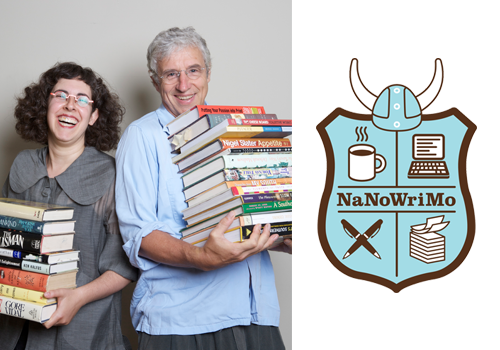
It’s February of our “Now What?” Months, which means the Book Doctors are returning for NaNoWriMo Pitchapalooza 2016! Read on for more details:
You wrote your 50,000 words (or got pretty close!). You’re a winner. You felt the high. Now what are you going to do with your precious manuscript? That’s where we, The Book Doctors, come in.
What is Pitchapalooza?You get 250 words to pitch your book. Twenty-five pitches will be randomly selected from all submissions. We will then critique the pitches online so you get to see what makes a great pitch.
We will then choose one winner from the group. The winner will receive an introduction to an agent or publisher appropriate for his/her manuscript. We will also crown a fan favorite who will receive a free one-hour consult with us (worth $250).
Beginning February 1, 2016, you can email your pitch to nanowrimo@thebookdoctors.com. Please do not attach your pitch; just embed it in the email. All pitches must be received by 11:59PM PST on February 29, 2016. The 25 random pitches will be posted on March 14, 2016. Winners will be announced on April 1, 2016. Anyone can vote for fan favorite, so get your social media engine running as soon as the pitches go up!
Like last year, we’re offering free 20-minute consultations (worth $100) to anyone who buys a copy of The Essential Guide To Getting Your Book Published. Just attach a copy of your sales receipt to your email and we’ll set up your consultation.
Cari Noga, our 2011 NaNoWriMo Pitchapalooza winner had her book, Sparrow Migrations, published this summer by Lake Union Publishing, a division of Amazon Publishing. Stacy McAnulty, our 2013 NaNoWriMo Pitchapalooza winner, got a three-book deal from Random House for The Dino Files. Her first book, The Dino Files: A Mysterious Egg, was released this January! Then there’s Pitchapalooza winner and NaNoWriMo veteran, Gennifer Albin. After she won Pitchapalooza, one of New York’s top agents sold her dystopian novel in a three-book, six-figure deal. Her third book, Unraveled, just came out in paperback. And these are just a very few of our many success stories!
Are you feeling a little unsure about exactly how to craft your pitch?
10 Tips for Pitching:A great pitch is like a poem. Every word counts.Make us fall in love with your hero. Whether you’re writing a novel or memoir, you have to make us root for your flawed but lovable hero.Make us hate your villain. Show us someone unique and dastardly whom we can’t wait to hiss at.Just because your kids love to hear your story at bedtime doesn’t mean you’re automatically qualified to get a publishing deal. So make sure not to include this information in your pitch.If you have any particular expertise that relates to your novel, tell us. Establishing your credentials will help us trust you.Your pitch is your audition to show us what a brilliant writer you are, it has to be the very best of your writing.Don’t make your pitch a book report. Make it sing and soar and amaze.8. A pitch is like a movie trailer. You start with an incredibly exciting/funny/sexy/romantic/etc. close-up with intense specificity, then you pull back to show the big picture and tell us the themes and broad strokes that build to a climax.Leave us with a cliffhanger. The ideal reaction to a pitch is, “Oh my God, what happens next?”Show us what’s unique, exciting, valuable, awesome, unexpected, about your project, and why it’s comfortable, familiar and proven.
Chris Baty's Blog
- Chris Baty's profile
- 63 followers



